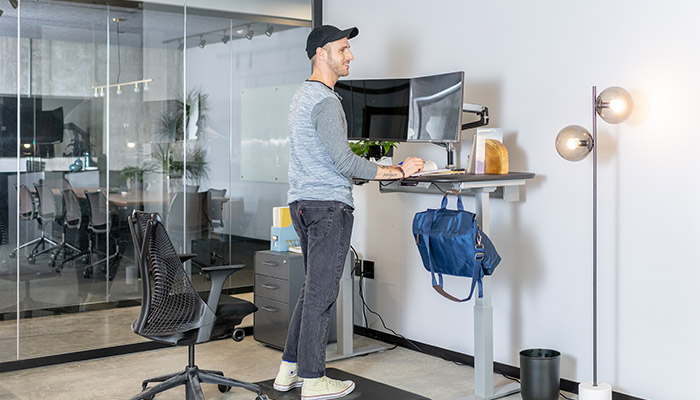You’ve already heard about the benefits of moving more at work: increased energy, improved productivity and better mood states. Moving more also can reduce back and neck pain (or help prevent it). And using a sit-stand desk is one of the easiest ways to take advantage of these and many other benefits.
Now it’s time to convince your supervisor to approve your sit-stand desk purchase.
While the number of work place standing desks is increasing, some employers won’t automatically give new or current employees the option for an active workstation. Many still require doctor’s notes, which is a reactive solution to a broader problem of inactivity. Changing a supervisor’s mind is possible though.
To request a standing desk at your workplace, follow these five tips:
- Lean on research: Any cost-related decision garners more support with facts and research. Understand why adding movement to the workday makes a difference in terms of mood, satisfaction and overall well-being.
- Show the value: Use tools like our WorkFit Payback Calculator to further support your request, showing how workspace enhancements are prudent economic investments.
- Focus on the space Standing desks don’t have to hinder the aesthetics of office environments. Describe how standing desks enhance traditional office environments, while creating flexibility that supports collaboration. And use the Workspace Planner to reassure your boss that you will use the desk correctly for your height.
- Choose the right time: Budgets usually are the most flexible at the beginning of the year, so consider timing your request when wellness initiatives kick off in January. Inactivity isn’t a seasonal problem, however, so watch for windows of opportunities (company growth, new leaders) that may support this investment.
- Share key resources: Not totally comfortable making the case for sit-stand in your office? Share our executive brief with your manager to support your business case.
As organizations continue to evolve and recognize the importance of movement in the workplace, the questions surrounding how to request a standing desk should become a relic of the past. Instead, savvy organizations will develop established processes for ensuing employees have access to an array of sit-stand options that best fit their needs while supporting a movement culture. In the meantime, stand up for your health and convince your organization that moving more means moving forward.



